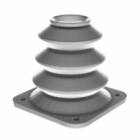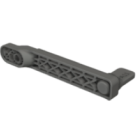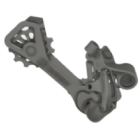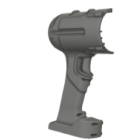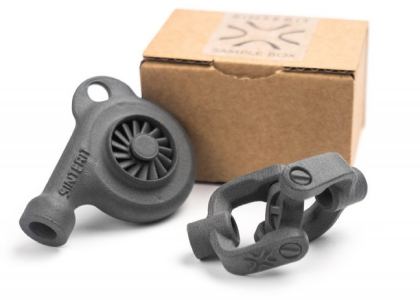AI in 3D printing
Artificial Intelligence is no longer a futuristic concept—it’s actively transforming how we design, optimize, and execute 3D printing processes. From automating file preparation to enhancing part quality in real-time, AI in 3D printing is unlocking new levels of efficiency and precision. But this isn’t just about buzzwords or hype. It’s about integrating intelligent algorithms into every stage of the additive workflow, turning data into design and machines into collaborators. This integration spans from pre-processing and machine calibration to adaptive manufacturing and post-print analysis, creating a truly data-driven production ecosystem.
In this chapter, we’ll explore how AI is shaping 3D printing today, what it enables in terms of design and automation, and where it’s headed next.
Can AI create 3D print files?
Yes, and it’s already happening. AI can now assist in creating 3D print files from scratch—especially when it comes to converting 2D images, sketches, or scans into printable geometry. Using generative design tools powered by machine learning, designers can input simple constraints (like load-bearing points or target material usage), and AI will generate multiple complex but manufacturable 3D shapes that humans may not think of. These algorithms typically rely on reinforcement learning or neural network-based solvers trained on millions of existing CAD models, enabling them to propose shapes that satisfy complex engineering constraints.
This kind of AI-generated 3D printing model workflow is particularly useful in fields like aerospace or biomedical engineering, where lightweight, performance-optimized parts are essential and traditional design methods reach their limits.
AI-driven design optimization
AI is extremely powerful when used for automated topology optimization. These algorithms evaluate stress distribution, thermal profiles, and even vibrational frequencies to reshape parts for maximum performance. For instance, a bracket printed in titanium might be reduced in weight by 30–50% thanks to AI-optimized geometry—while maintaining or even increasing its load capacity.
This doesn’t just improve material efficiency; it also reduces print time and cost. More importantly, AI-powered software can simulate different manufacturing constraints before anything is printed, significantly reducing trial-and-error iterations. However, these simulations depend heavily on accurate material models and process parameters — incorrect data can still lead to deviation between simulated and printed results.
AI for print monitoring and quality control
Another key application of AI for 3D printing is real-time process monitoring. Through computer vision and sensor fusion, AI can detect anomalies such as layer shift, under-extrusion, or warping during the print itself—long before they lead to total failure. This is achieved using in-situ monitoring systems equipped with high-speed cameras, thermal sensors, and photodiodes that feed real-time data into convolutional neural networks trained to identify defect patterns. Some advanced systems can even correct printing parameters on the fly, dynamically adjusting speed, temperature, or laser intensity based on sensor feedback.
This is already being used in metal 3D printing, where the stakes (and costs) of failed prints are particularly high. But even in desktop FDM or SLS systems, AI-enhanced quality control is becoming a competitive edge.
AI 3D printing software and automation
Today’s 3D printing software is increasingly embedded with AI to automate repetitive tasks and improve print preparation. Modern slicing engines are increasingly using AI and machine learning to:
- automatically suggest optimal part orientation based on strength or surface quality,
- predict support structure needs with minimal material waste,
- adjust infill patterns depending on load path predictions.
In the near future, we may see full end-to-end automation, where AI handles model creation, slicing, printer selection, parameter optimization, and even material ordering. This is especially valuable in production environments using large-format or multi-material 3D printers.
Can AI design for additive manufacturing?
The short answer is: absolutely. AI can go beyond just generating shapes—it can be trained to “think” additively. That means understanding the rules and constraints of layer-by-layer fabrication: overhangs, support-free geometry, anisotropic strength properties, and material behavior under heat or pressure. As a result, AI can produce designs that are not only functional but optimized for how they’ll be printed. In advanced workflows, AI is also used to predict residual stresses and distortion during the printing process, enabling compensation directly in the CAD stage.
This is where AI 3D printing design merges with DFAM (Design for Additive Manufacturing), leading to innovations like lattices, gyroid infills, or bio-inspired geometries that are impossible to make using traditional methods.
Looking forward: the future of AI in 3D printing
As machine learning models continue to improve, we can expect AI to play a major role in predictive maintenance, automated post-processing, and even customer-facing applications like voice-generated 3D model creation. Imagine telling your software what you need—“a phone stand for an iPhone 15 with wireless charging space”—and getting a printable STL in seconds.
Meanwhile, AI is already being trained on massive datasets of printable models, error logs, and material data. This opens the door to:
- intelligent fleet management systems that prioritize and queue print jobs autonomously,
- adaptive learning slicers that get better with every print,
- AI-generated lattice structures based on real-world performance data,
Final thoughts
The relationship between AI and 3D printing is still in its early stages, but the momentum is clear. From AI 3D printing software that slashes prep time to intelligent systems that create, monitor, and correct models autonomously, we’re looking at a shift from operator-driven to data-driven manufacturing.
The question is no longer whether AI can design or print — it’s how quickly manufacturers will adopt it to unlock true intelligent, autonomous production.
Explore also
- Is 3D printing the future?
- What is the future of 3D printing?
- Future uses of 3D printing
- 3D printing vs traditional manufacturing
- What will 3D printers be used for in the future
- Trends in additive manufacturing
- Automation 3D printing
Related categories




